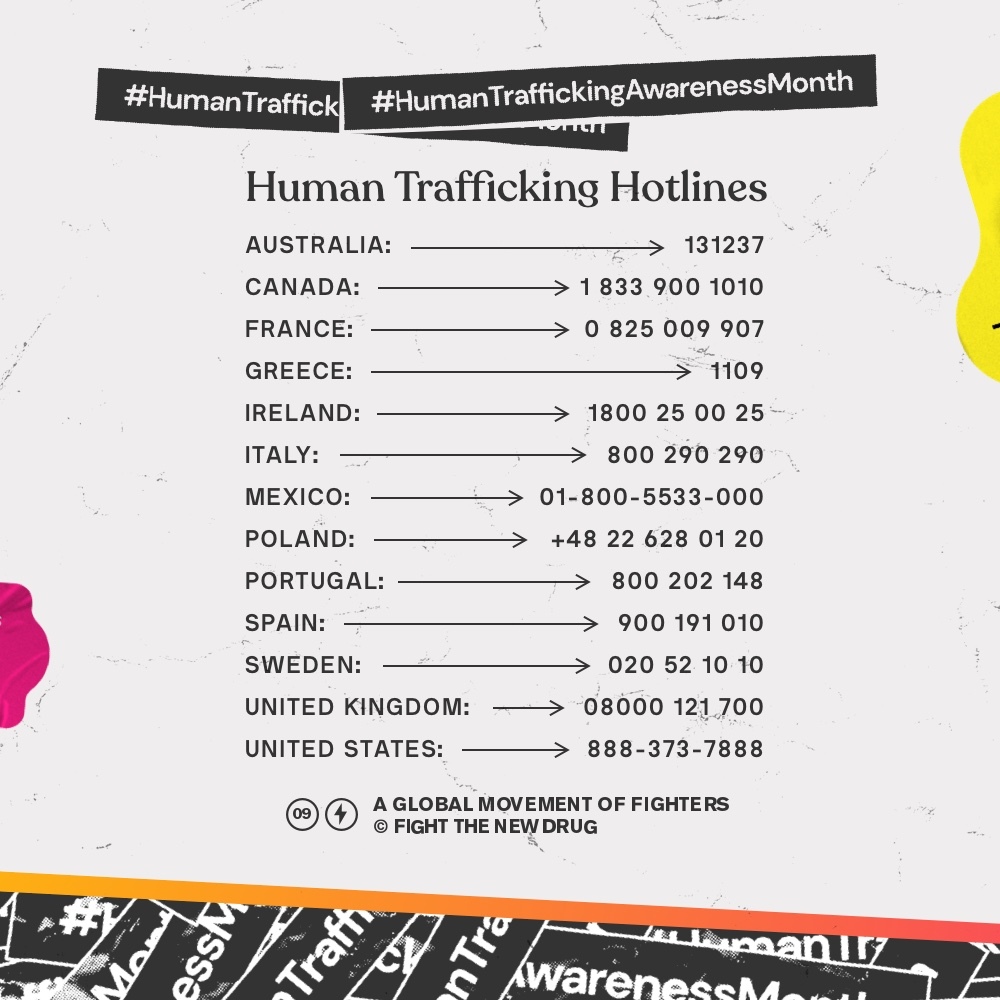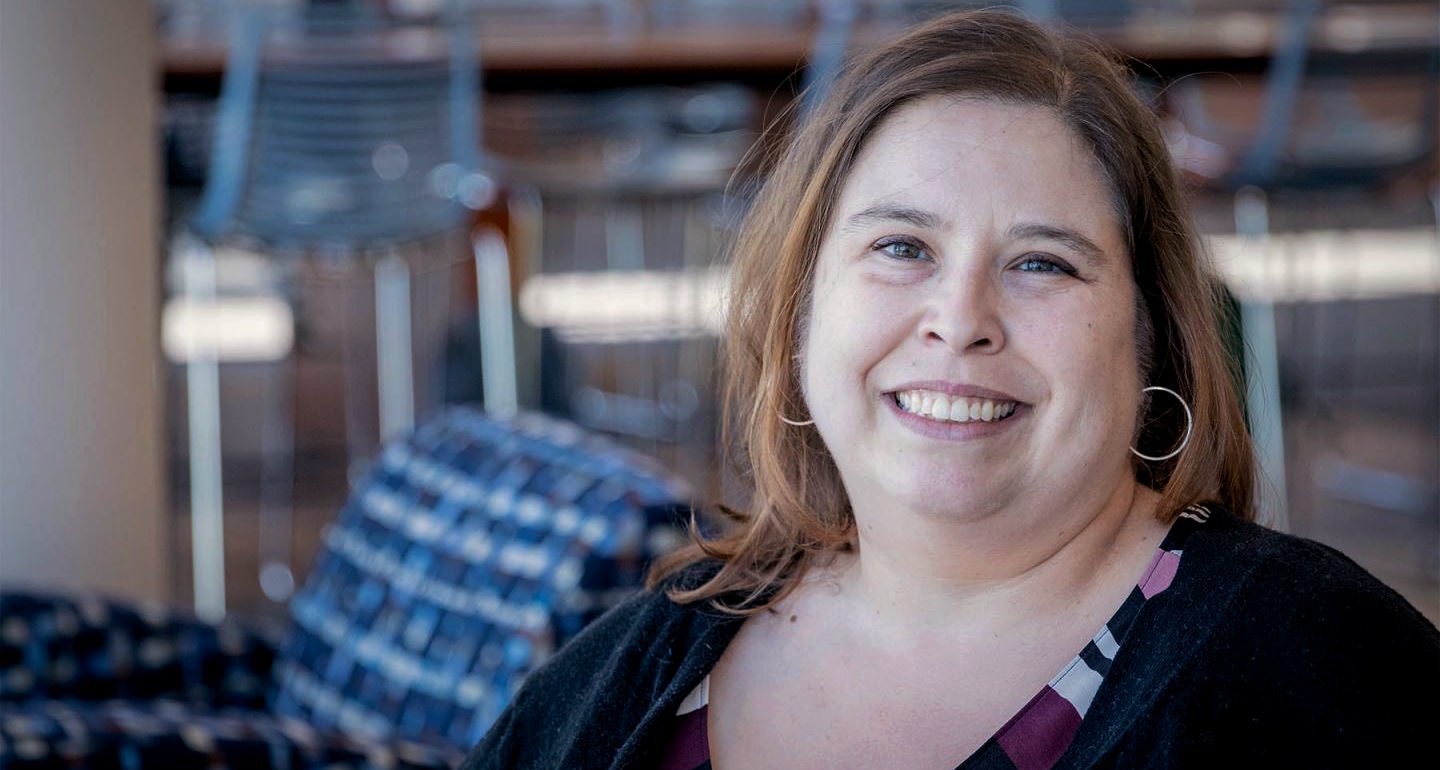Cover image credit to West Virginia University, retrieved from ScienMag.com. 5-minute read.
When Kimberly Weller got a job at a spa in Bradenton, Florida, she knew she wasn’t hired as a massage therapist. The brothel charged $60 for an hour with Kimberly, and she kept half plus any tips, at one point making up to $700 dollars a day.
Kimberly had never heard the term “sex trafficking” but she noticed that nearly every girl working in the brothel shared a similar story to her. They had been sexually abused as children, too.
Later, Kimberly said that if a teacher had intervened when she was in elementary school to help her understand that the family member who molested her was not okay and that it wasn’t her fault, her decisions and life path would have been different.
Around the US, researchers are focusing on the issue of sex trafficking and doing their best to raise awareness among both educators and students. After all, the issue is more prevalent than you may think and certainly closer to home than you may want to believe.
How the opioid epidemic influences sex trafficking in West Virginia
West Virginia has been hit hard by the opioid crisis.
According to Amie Ashcraft, director of research for the Department of Family Medicine at West Virginia University, trafficking is often done to fuel a drug habit. This fact along with geographic isolation, lower levels of education, and fewer economic opportunities, all contribute to why a person—even a parent—may turn to selling a child as a cash source.
“There’s a widespread misunderstanding about what ‘trafficking’ actually is,” said Ashcraft. “The sexual exploitation of children can involve stripping, pornography, or prostitution. It occurs when one person sells another for a profit. It often gets miscategorized as child abuse, sexual abuse or kidnapping. Many people think it involves movement across borders and believe it’s something that only happens in bigger cities.”
To help raise awareness in rural communities, Ashcraft is developing an app to train key personnel to identify and report sex trafficking. The app is called SexEx Rural and will provide practical training for public school personnel and county health department staff, as these two groups are likely to come in contact with a child who has been victimized.
It’s currently in a prototype phase, and developers anticipate its launch in 2022 in West Virginia. They hope it’ll be scalable to the whole US, in time.
The app will feature audio and video playing out potential trafficking scenarios, interactive quizzes, and real-world examples contributed by survivors. It will also provide resources for reporting and supporting victims.
“Recognizing is key. Victims of trafficking face a lot of negative life and health outcomes now and in the future, so the sooner it’s caught, the better,” said Ashcraft. “We really want to raise that awareness, to get these skills out to much smaller communities so people will recognize it when they see it.”
Florida educators now required to teach students about sex trafficking
While it is crucial for professionals working with children and teens to be aware of the signs of sex trafficking, a new rule adopted by the Florida Board of Education takes raising awareness to the kids themselves. Florida is now the first state in the US to require sex trafficking education as a part of every student’s curriculum.
“Tragically, human trafficking is an epidemic in our country,” said Gov. Ron DeSantis. “Children of all ages need to know and understand the hazards of human trafficking and how to protect themselves from dangerous predators.”
Related: Lyft Drivers And Delta Airlines Personnel Are Now Trained To Spot Human Trafficking
The policy requires every school district to implement age-appropriate lessons about the dangers of trafficking. The keyword here is “age-appropriate.”
Kindergarteners won’t be learning about sexual assault, but instead talking about safe and unsafe touch and understanding the difference between a secret and a surprise, which refers to common grooming tactics. High school students will learn about schemes used by traffickers, and there is a focus on building female self-confidence.
“If a guy comes over and says, ‘You girls are beautiful,’ he is looking for the one who looks down and says, ‘No I am not.’” said Elizabeth Melendez Fisher Good, CEO of Selah Freedom, an organization that helped bring the policy into being.
In the organization’s eight-year existence, they have worked with thousands of female victims and they say 100% have been victims of child sexual abuse and most kept it a secret, continuing to believe that their body is their only value to the world.
Getting schools to talk about trafficking was a challenge according to Valerie Ellery. Florida Department of Education’s new Human Trafficking Education Specialist. She said they were worried about fear-mongering. To her, it was important to get the message out that trafficking is more common than we may think. Ignoring it won’t make it go away.
“Trafficking can occur with anybody for anybody,” said Ellery. “We need to be aware and know what are the indicators that the perpetrators are using.”
The messy link between sex trafficking and pornography
Raising awareness about the realities of sex trafficking is what we are all about. We love hearing about new tools like the West Virginia University app that will train and educate people who work with children or new policies trying to help kids know what’s appropriate and what could be dangerous red flags.
If these new methods can prevent one child from being trafficked or rescue one victim early, it’s worth it.
In case you missed it, pornography was listed as one of the ways minors are regularly abused and sex trafficked. Often pornography is used as advertising by displaying what the victim is available for. One survey of sex trafficking victims revealed 63 percent of them had been advertised online.
Related: “TraffickCam”: This App Helps You Fight Sex Trafficking While You Travel
Additionally, pornography is used as a grooming method. Traffickers show victims porn to desensitize the victim—sometimes an underage child—to the acts they would be subjected to.
This all may seem so far away or unrelatable if you’ve never come in contact with a sex trafficking survivor or experienced it yourself. But let’s not forget that the links between sex trafficking and pornography reach every one of us no matter where we are or if we have been victimized.
What you watch matters. Every click on porn reinforces the profitability of the industry, which can ultimately drive demand for sex traffickers to make money by selling videos of their victims online.
Dr. Karen Countryman-Roswurm, Founding Executive Director at Center for Combating Human Trafficking at Wichita State University, explains what we mean:
“The images that occur within pornography actually encourage, promote, and normalize that people want violence during sex…. Pornography absolutely perpetuates abuse. It perpetuates human trafficking. It dehumanizes people.”
What will you do today to stop the demand for sexual exploitation?

Your Support Matters Now More Than Ever
Most kids today are exposed to porn by the age of 12. By the time they’re teenagers, 75% of boys and 70% of girls have already viewed itRobb, M.B., & Mann, S. (2023). Teens and pornography. San Francisco, CA: Common Sense.Copy —often before they’ve had a single healthy conversation about it.
Even more concerning: over half of boys and nearly 40% of girls believe porn is a realistic depiction of sexMartellozzo, E., Monaghan, A., Adler, J. R., Davidson, J., Leyva, R., & Horvath, M. A. H. (2016). “I wasn’t sure it was normal to watch it”: A quantitative and qualitative examination of the impact of online pornography on the values, attitudes, beliefs and behaviours of children and young people. Middlesex University, NSPCC, & Office of the Children’s Commissioner.Copy . And among teens who have seen porn, more than 79% of teens use it to learn how to have sexRobb, M.B., & Mann, S. (2023). Teens and pornography. San Francisco, CA: Common Sense.Copy . That means millions of young people are getting sex ed from violent, degrading content, which becomes their baseline understanding of intimacy. Out of the most popular porn, 33%-88% of videos contain physical aggression and nonconsensual violence-related themesFritz, N., Malic, V., Paul, B., & Zhou, Y. (2020). A descriptive analysis of the types, targets, and relative frequency of aggression in mainstream pornography. Archives of Sexual Behavior, 49(8), 3041-3053. doi:10.1007/s10508-020-01773-0Copy Bridges et al., 2010, “Aggression and Sexual Behavior in Best-Selling Pornography Videos: A Content Analysis,” Violence Against Women.Copy .
From increasing rates of loneliness, depression, and self-doubt, to distorted views of sex, reduced relationship satisfaction, and riskier sexual behavior among teens, porn is impacting individuals, relationships, and society worldwideFight the New Drug. (2024, May). Get the Facts (Series of web articles). Fight the New Drug.Copy .
This is why Fight the New Drug exists—but we can’t do it without you.
Your donation directly fuels the creation of new educational resources, including our awareness-raising videos, podcasts, research-driven articles, engaging school presentations, and digital tools that reach youth where they are: online and in school. It equips individuals, parents, educators, and youth with trustworthy resources to start the conversation.
Will you join us? We’re grateful for whatever you can give—but a recurring donation makes the biggest difference. Every dollar directly supports our vital work, and every individual we reach decreases sexual exploitation. Let’s fight for real love:



